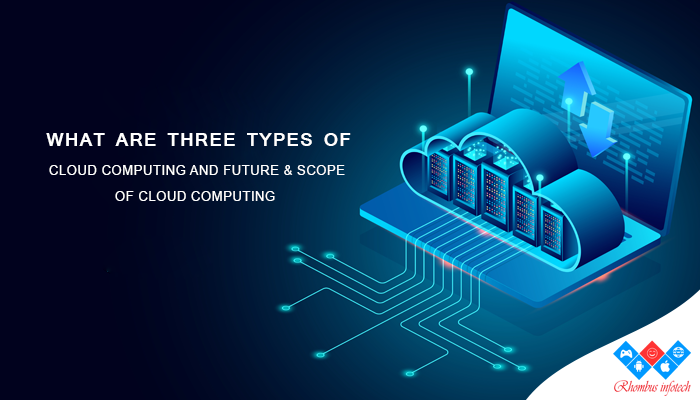Cloud computing is the on demand delivery of IT infrastructure resources by business organizations & companies that offer these cloud services are known as Cloud Service Providers. There is a lot of confusion about cloud computing services because there are various types of services and deployment infrastructure that fall under one roof of Cloud computing. Today in this article will talk about the basic concepts of Cloud computing. Well! there are 3 types of cloud computing: Infrastructure as a Service (IaaS), Platform as a Service (PaaS), and Software as a Service (SaaS). With IaaS, companies control their own computing, networking, and storing components without having to manage them on-premises physically. PaaS, provides developers with a framework to build custom applications, while SaaS avails internet-enabled software to organizations via a third party.
There are four types of cloud deployment models: Private Cloud, Public Cloud, Hybrid Cloud & Community Cloud
Private Cloud
Private cloud model consists of an infrastructure that is owned by a single business. This model can be hosted in-house or can be externally hosted. Although expensive, the private cloud model is well suited for large organizations with a focus on security, customizability and computing power. Individuals/organizations that choose Private Cloud gets dedicated infrastructure that is not shared by any other individual/organization. The security and control level is highest while using a private network. The costs are born by an individual/organization and are not shared with any other individual/organization. Management of Private Cloud is taken care of by the user and the CSP (Cloud Service Providers) does not provide any Cloud management services.
Public Cloud
The entire computing infrastructure is located on the premises of the CSP (Cloud Service Providers) that offers Cloud services over the internet. This is the most economical option for organizations that do not wish to invest in big IT infrastructure. In a Public Cloud environment, the resources are shared between multiple users who are also called Tenants. The cost of using Cloud services is determined through the usage of IT resources consumed. Organizations pay public cloud models on a pay-per-use basis, making it a suitable solution for smaller businesses looking out to save money.
Hybrid Cloud
Hybrid Cloud is a combination of both private & public cloud, a hybrid cloud combines the two models to create a tailored solution that allows both platforms to interact seamlessly. Hybrid Cloud allows the sharing of data and applications between Public and Private Cloud environments. Organizations mainly use Hybrid Cloud when their On-Premise infrastructure needs more scalability, so they make use of scalability on Public Cloud to meet fluctuating business demands.
Community Cloud
A Community Cloud is a Cloud infrastructure that is shared by users of the same industry or by those who have common goals. This Cloud infrastructure is built after understanding the computing needs of a community as there are many factors including compliances and security policies which need to be included in the community Cloud infrastructure.
Cloud computing services fall into 3 main categories: Infrastructure as a Service (IaaS), Platform as a Service (PaaS), and Software as a Service (SaaS). Functions as a Service (FaaS) is a relatively new Cloud service model. These are sometimes called the Cloud computing stack because they build on top of one another.
Infrastructure-as-a-service (IaaS)
Infrastructure as a Service (IaaS) contains the most basic building blocks for Cloud infrastructure and offers services on tops of it such as renting IT infrastructure (virtual or physical) and networking features. IaaS mainly includes Cloud-based services on a pay-as-you-go model. A user pays for computing services on IaaS because it is the fundamental platform to build new technologies.
Platform as a service (PaaS)
Platform-as-a-service (PaaS) refers to the supply of on-demand tools for developing, testing, delivering, and managing software applications. PaaS delivers a framework for developers and IT architects to create web or mobile apps that are scalable, without worrying about setting up or managing the underlying infrastructure of servers, storage, network, and databases needed for development.
Software as a service (SaaS)
Software-as-a-service (SaaS) is a method for delivering on-demand software applications through Cloud on a subscription basis. A CSP takes care of managing the Cloud infrastructure and offers SaaS applications over the internet to a user that are accessible through a web browser. These applications are also available on multiple devices which can be accessed from anywhere.
Functions as a Service (FaaS)
Functions as a Service (FaaS) adds another layer of abstraction to PaaS so that developers are completely isolated from everything in the stack below their code. FaaS is the concept of Server less Computing. Instead of handling the hassles of virtual servers, containers, and application runtimes, they upload narrowly functional blocks of code and set them to be triggered by a certain event. FaaS applications consume no IaaS resources until an event occurs, reducing pay-per-use fees.
Organizations can easily choose from the 3 types of cloud computing—IaaS, PaaS or SaaS—based on workload requirements. Although you do not realize you are probably using Cloud computing right now, there are many services that we use on a day-to-day basis such as sending emails, editing documents, streaming movies, etc. Today, a variety of organizations ranging from startups to government institutions, are embracing Cloud technology.

